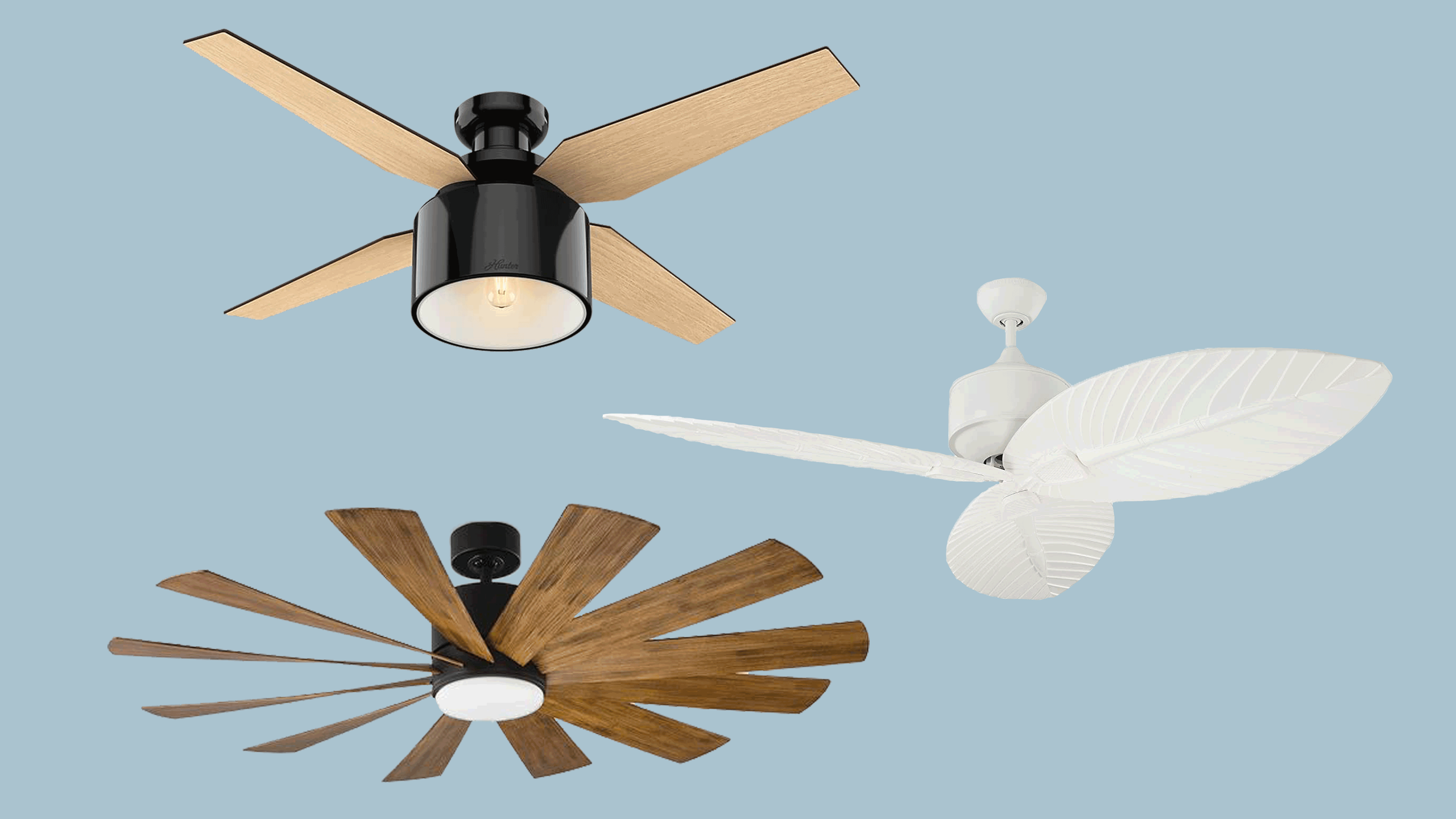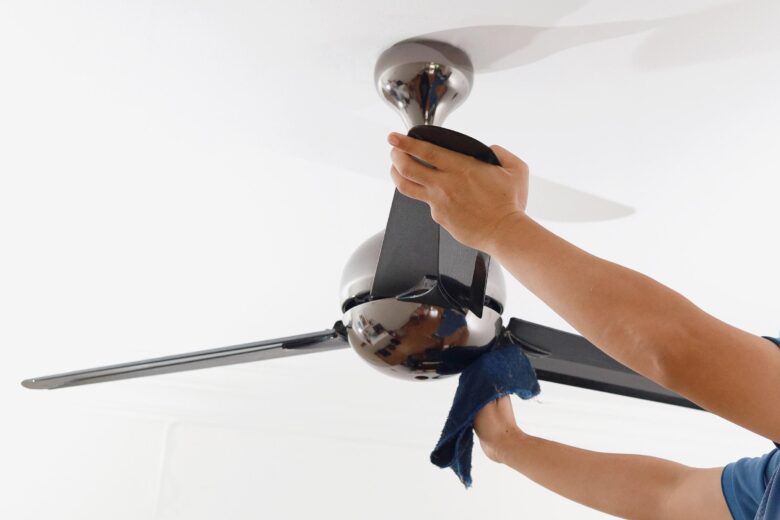Ceiling fans are a valuable addition to any home, providing both comfort and energy efficiency. As a potential buyer or owner of a ceiling fan, it’s essential to understand its lifespan and durability. In this article, we will delve into the average lifespan of a ceiling fan, factors that influence its longevity, and practical maintenance tips to help you maximize its performance and longevity.
Contents
Understanding the Average Lifespan
The average lifespan of a ceiling fan can vary depending on several factors, including the quality of the fan, usage patterns, and maintenance. On average, a well-made ceiling fan can last anywhere from 10 to 15 years. However, it’s important to note that this estimate is not absolute and can be influenced by various circumstances.

Source: multitradebuildingservices.com
Factors Influencing Lifespan
- Quality of Construction: Higher quality ceiling fans are typically built with durable materials and better craftsmanship, resulting in a longer lifespan. Investing in a reputable brand known for their reliable and well-built fans can contribute to increased durability.
- Frequency and Duration of Use: The lifespan of a ceiling fan can be influenced by how frequently and for how long it is used. Ceiling fans that are constantly running or used for extended periods may experience more wear and tear, potentially shortening their lifespan.
- Environmental Factors: Ceiling fans located in areas with high humidity, extreme temperatures, or exposure to dust and debris may experience accelerated wear. These environmental factors can impact the performance and longevity of the fan.
Maintenance and Care
Proper maintenance plays a crucial role in extending the lifespan of your ceiling fan:
- Regular Cleaning: Dust and dirt accumulation can strain the motor and affect the fan’s performance. Regularly dust the blades and clean other components of the fan using a damp cloth or a soft brush attachment on a vacuum cleaner. Avoid using harsh chemicals or abrasive materials that could damage the fan’s finish.
- Lubrication: Over time, the bearings in the motor may require lubrication to maintain smooth operation. Consult the fan’s manual for specific instructions on lubricating the motor and use a recommended lubricant if necessary.
- Tighten Connections: Periodically check and tighten the screws, bolts, and electrical connections to ensure the fan remains stable and secure. Loose connections can cause noise, wobbling, and potential damage to the fan.
- Balance Adjustment: If your fan begins to wobble, it’s important to address the issue promptly. Use a balancing kit, typically provided by the manufacturer, to correct any imbalances. A properly balanced fan reduces strain on the motor and prolongs its lifespan.
- Professional Servicing: Consider having your ceiling fan serviced by a professional technician every few years, especially if you notice significant performance issues or unusual noises. They can inspect the fan, identify potential problems, and perform any necessary repairs.
While the average lifespan of a ceiling fan is around 10 to 15 years, proper maintenance and care can significantly extend its longevity. Investing in a high-quality fan, regular cleaning, lubrication, and addressing any issues promptly are key to maximizing its lifespan. By understanding these factors and implementing appropriate maintenance practices, you can enjoy the comfort and energy efficiency of your ceiling fan for many years to come.

Source: architecturaldigest.com
Choosing a High-Quality Ceiling Fan: Ensuring Longevity and Performance
Investing in a high-quality ceiling fan is essential if you want to maximize its lifespan and performance. When it comes to choosing a reliable and durable fan, there are a few key factors to consider. Opt for reputable brands known for their expertise in producing well-built ceiling fans. These brands have established a track record of delivering reliable products that stand the test of time. They often provide better customer support and warranty options, giving you peace of mind regarding the longevity of your investment.
Examine the construction and materials used in the fan’s design. Higher quality ceiling fans are often built with durable materials such as high-grade metals or reinforced plastics. These components can withstand regular use and resist wear and tear, ensuring a longer lifespan for your fan. Consider features such as motor efficiency and noise reduction. Fans with energy-efficient motors not only contribute to environmental sustainability but also tend to have a longer lifespan due to reduced strain on the motor components.
Maximizing Lifespan through Efficient Usage and Environmental Considerations
Apart from choosing a high-quality ceiling fan, the way you use and maintain it can significantly impact its lifespan. By adopting efficient usage practices and considering environmental factors, you can ensure that your fan remains in optimal condition for an extended period. Be mindful of how frequently and for how long you operate the fan. While ceiling fans are designed for continuous use, excessive or prolonged usage can accelerate wear and tear. Consider turning off the fan when leaving the room or adjusting the speed according to your comfort needs.
Environmental factors also play a role in the longevity of your ceiling fan. If your fan is located in a humid area, such as a bathroom or a kitchen, ensure proper ventilation to minimize moisture accumulation. Similarly, if your fan is installed outdoors, choose a model specifically designed for outdoor use, as they are built to withstand exposure to the elements.

Source: rd.com
Final Thoguhts
Ceiling fans are a valuable investment that provides comfort, energy efficiency, and aesthetic appeal to any home. Understanding the average lifespan of a ceiling fan, as well as the factors that influence it, is crucial for making an informed purchase decision and ensuring its longevity.
While the average lifespan of a ceiling fan ranges from 10 to 15 years, several factors can affect its durability. These factors include the quality of construction, frequency and duration of use, and environmental conditions. By investing in a high-quality fan, adopting efficient usage practices, and considering environmental factors, you can significantly extend the lifespan of your ceiling fan.
Proper maintenance and care also contribute to the longevity of your ceiling fan. Regular cleaning, lubrication, tightening connections, balancing adjustments, and periodic professional servicing are all important maintenance practices to maximize the fan’s performance and lifespan.
